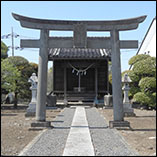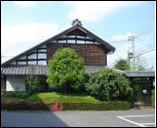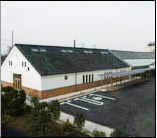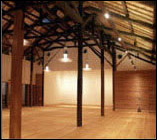Cultural Activities >
Message from the Director and Corporate Adviser
Since the business was started in 1873, Shoda Shoyu has rooted itself in Tatebayashi, Gunma Prefecture, and has evolved together with the local community. Our origin dates back to the Edo Period, which means that we have been in Tatebayashi for 300 years.
Owing to this long history, we can find various reminders of the times before we made soy sauce within the premises of the Headquarters House. There is the Shoda Inari Shrine built in 1828, the shop built in 1853 -- now known as the Shoda Memorial Museum displaying various documents dating up to present day -- and the Shoda Shoyu Library built at the end of the Edo Period (late 1860’s). All of these buildings are registered as tangible cultural assets, reflecting our long-standing desire to preserve the old intact.
The Headquarters House completed in 2004 was originally a soy sauce brewing house. Here, let us take a quick look at how soy sauce is made. First, the koji mold, a fungus, is grown in a mixture of steamed soy beans and roasted wheat, to which is then added salt water to make a fermentation mash called moromi. The moromi is fermented in a vat for a year. The juice that is pressed out of the fully matured moromi is soy sauce.
The brewing houses were originally used to house the vats of moromi. A single vat had a capacity of 60 stones (approximately 10 thousand liters), and 200 vats were housed in the two houses. Such a large number of vats was necessary because it took a year to make soy sauce.
Recently, however, the brewing method has shifted to the use of temperature-controlled outdoor metal fermentation tanks, thereby leaving the brewing houses idle. They were used as warehouses at one point, but with the construction of a new warehouse, they became unnecessary and were left untouched for a while.
At this point, the proposal emerged to reuse one of these old brewing houses as the new Head Office whose construction had been in planning for years. The former Head Office was located within the same three-story building as the Research Center, and for the past 20 years or so, they were both becoming increasingly crowded. As the pillar of the 130th Anniversary Celebration of the company, a project was undertaken to reincarnate the old brewing house as the new Head Office. The new Headquarters House which was completed on November 1, 2004 is environmentally friendly in that it actively uses recycled ancient timber while fully integrating, without compromise, state-of-the-art facilities. It is indeed a fusion of old and new, a building which physically expresses Shoda Shoyu’s corporate culture. The building received the 16th BELCA Award. More important, however, we take great pride in the significant fact that we were able to preserve a brewing house that was built about 100 years ago -- one that merits being called a cultural heritage. We offer the multi-purpose Bun-emon Conference Hall and the Shoda Gallery next to it within the Head Office grounds for open public use, in hopes of contributing to cultural enlightenment of the community.
Koji Shoda,
Director and Corporate Adviser

Shoda Inari Shrine

Shoda Memorial Museum

Headquarters House

Bun-emon
Conference Hall

